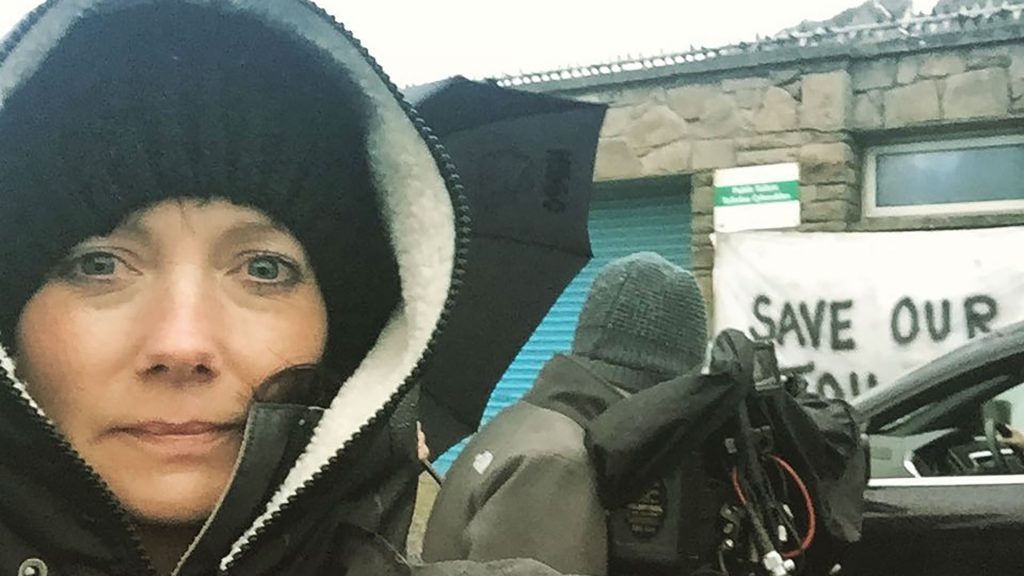SJ: Behind The Seams
by Rhiannon James
The television and film industry has long been renowned for its ability to use costume design to create authentic and larger-than-life characters on screen. But what really goes into making these effortless pieces of wearable characterisation?
Welsh costume designer Sarah-Jane Perez has lived life behind the scenes and has designed costumes for numerous TV and film productions, including Keeping Faith (S4C), The A-List (Netflix), Whites (BBC) and Tales of Friendship (Disney).
Currently living in Rhiwbina after growing up in Penylan, Sarah-Jane attended Our Lady’s Convent, an all-girls school, but “always wanted to go to Whitchurch High School because they had boys there.”
“I was taught by nuns,” laughs Sarah-Jane. “The textile teacher there was taught to crochet by my father’s mother. My mother’s mother taught me to sew. She was the only person who had the patience to teach me.
“In high school, I was always drawing houses as I wanted to be an architect, but I was told I needed Maths to do that and I hated Maths,” she continues. “I thought I’d do fashion instead, but I ended up having to use Maths for things like pattern cutting and, later on in life, running my own business. I didn’t get away from Maths that easily!”
After high school, Sarah-Jane studied A levels at St David’s College, including Textiles under Mrs Salisbury, who was also taught crocheting by her father’s mother. Her desire to start working as soon as possible and make her way up the career ladder influenced Sarah-Jane’s decision to go in a different direction than most of her classmates. Newport Art College was the best option.
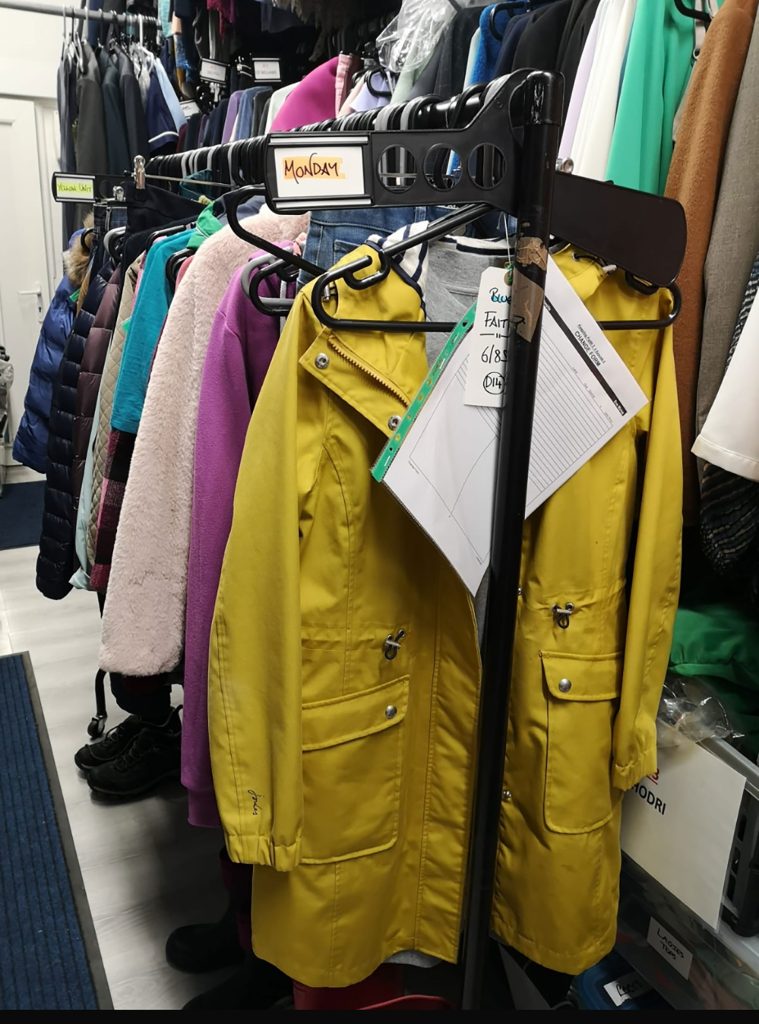
“I knew too many people going to Cardiff Art College and I wanted to work. It was the best year of my life,” she reflects. “Newport was a brilliant college, helping to bring out creativity and explore different mediums in Art. One of the things we did was life drawing; I got a fit of the giggles on my first session as the model came in, took his clothes off, and the easel collapsed in front of him. We worked hard but we partied hard there too.”
The costume designer then went on to study Fashion at Bristol University, as it was formerly known.
“Writing my thesis on What Makes Fashion Change in my final year – the direction of costume was really interesting because sometimes costume influences fashion.”
At that time, a business called Script to Screen, supplying costumes to the TV and film industry, opened up in Cardiff.
“HTV Studios had closed the costume department, so Chrissy Pegg, who was Head of Costume, bought all the stock and opened Script to Screen along with her business partner, Lynsey Wood. I went along and asked for two weeks’ work experience, which they kindly agreed to. A short while later, they offered me a permanent job there, so I got to meet a lot of costume designers. I was there for four years and learnt a lot!”
Sarah-Jane then decided to go freelance and worked on a number of jobs, including The Mal Pope Show, which led to working with singers like Bonnie Tyler, designing dresses for her, as well as various Welsh artists.
“Things were very exciting around that time. I worked with a lot of Welsh bands like The Stereophonics and the Manic Street Preachers, before they became famous,” Sarah-Jane remembers.
She landed a job working on Welsh TV show Nuts and Bolts, which was filmed in Merthyr. The show was the starting point of many Welsh artists such as Matthew Gravelle, Eve Myles, Matt Ryan, and a lot of other people’s careers. This helped build the designer’s portfolio and from there, she progressed onto larger dramas such as Con Passionate with Matthew Gravelle and Mark Lewis Jones, and Whites with Alan Davies.
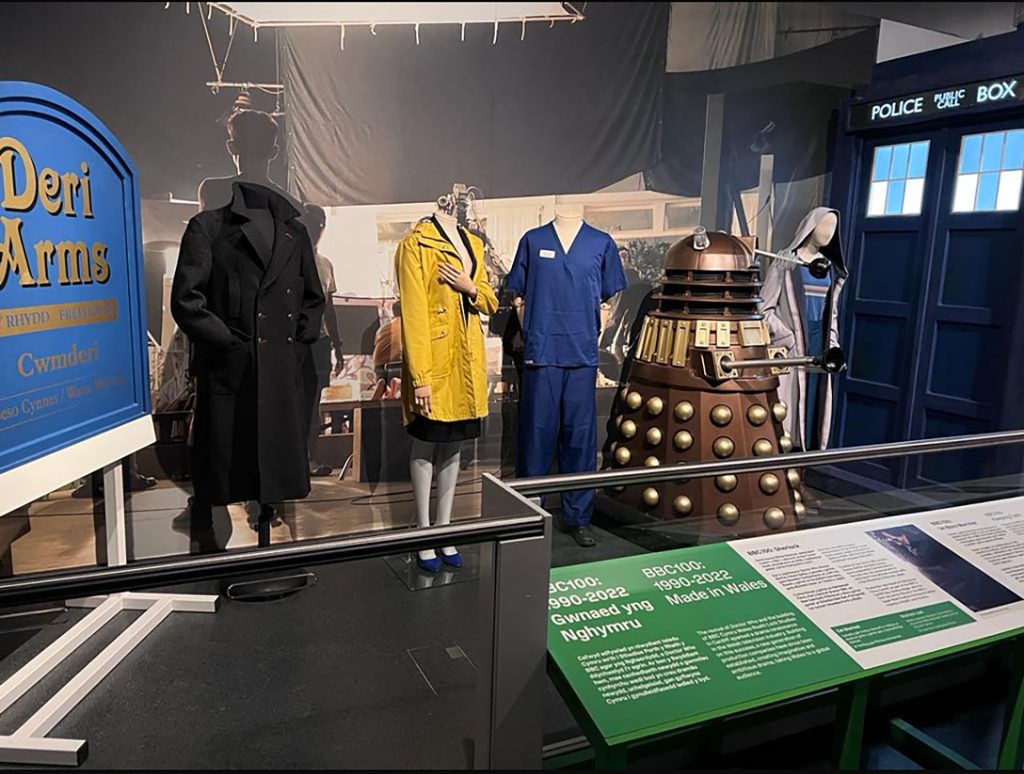
Sarah-Jane was nominated for three BAFTA Cymru for her work on Con Passionate, Whites – and later, Keeping Faith.
“Keeping Faith is the show that I have become most recognised for. It’s funny sometimes how you get a job. Sometimes you get jobs via agents but sometimes, it’s being in the right place at the right time. My sister was at the gym with [lead actress] Eve Myles and that’s how I found out about Keeping Faith. I remember reading the script and thinking how amazing it was. I had a Zoom interview and got the job!
“Keeping Faith was a modern-day drama, set in Laugharne and I could pull ideas for costumes from people I knew in real life.
“We had meetings about colour. I went through a lot of colours and research and I decided on yellow but it had to be the right shade of yellow. I found some coats, sent my assistant to buy them and when she came back. I looked through and said ‘That’s it!’ Eve tried it on and Faith was created. She was comfortable, it was practical – a mum of three would wear it; it was believable. It was keeping it real and she’d ‘pop’ on screen.”
The iconic yellow coat that Eve Myles wears in Keeping Faith was recently on display at an exhibition to celebrate 100 years of the BBC but is now going to live permanently at The National Museum of Wales in their collection. The clothes have attracted a lot of attention from the public since the show aired. The wardrobe of the characters has attracted so much attention. I’ve never had so many people get in touch and ask where they could get the same items.”
The dedication and attention to detail required by a costume designer helps tell its own story and gives actors the ability to become the character they are playing. Working closely with directors, production designers, and make-up artists, and actors is essential to make it successful, helping bring the writer’s work to life.
“Everything has a meaning – the colours, the styles,” says Sarah-Jane. “We have people we call breakdown artists who can make clothing look old and distressed. In many cases, we have to have more than one version of costumes as scenes are sometimes shot out of chronological order, so we all need to think ahead.
“It’s like putting a giant jigsaw together and I know if I’ve done a good job if viewers enjoy the story. It’s like special effects. If you know they’re there, they’re distracting you from the story. It’s the same with costumes.”
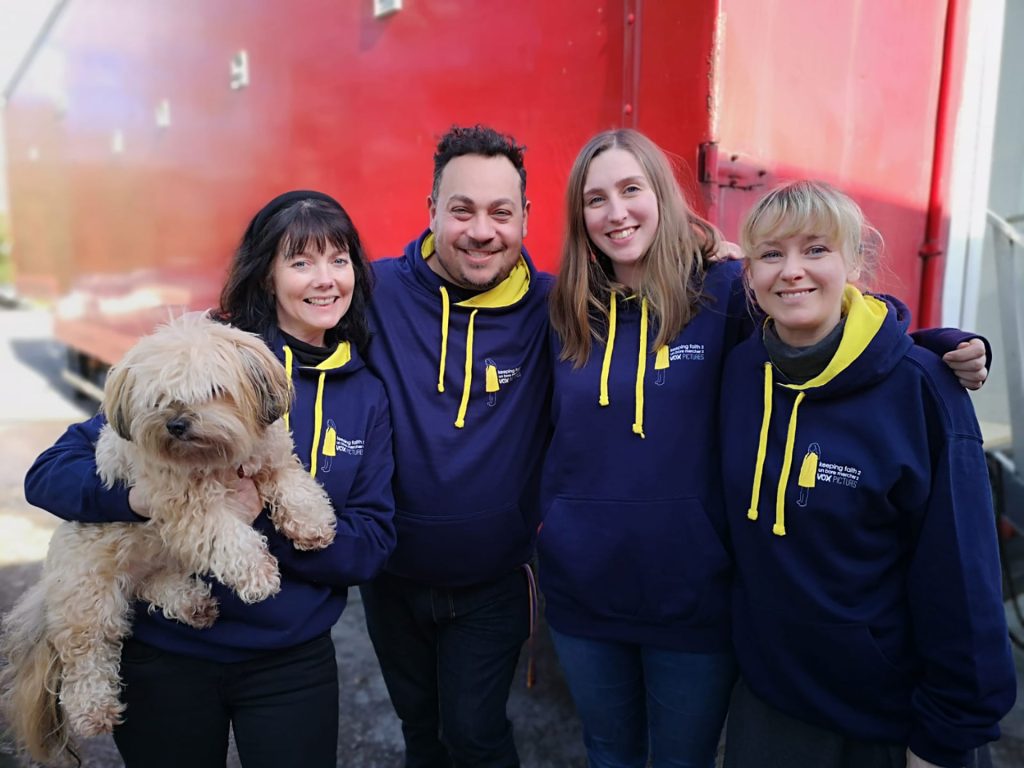
Sarah-Jane also faces challenges that affect the design process, as “there are also other things to consider – aspects like noisy fabrics affecting the Sound Department, whether certain fabrics need to be flame-proofed to protect actors, or even getting doubles in larger sizes to hide harnesses for stunt work,” she says.
“Actors need to be comfortable and they need to be believable in their costume. Some actors say they don’t feel that they’re the character until they put the costume on. An actor sometimes offers their own little touch of a certain perfume to help bring a character to life. It would be like putting a bridesmaid in a strapless dress when they’ve never worn one before because they are always hauling them up. You can’t have that in a TV or film production.”
Inspiration comes in many forms:
“There was a period project we shot in black and white, for example, and to get textures in black and white, I did look back at costume designers of that time like Edith Head. When you’re doing modern shows like Keeping Faith, you look around you for references based on the backstory of a character – lifestyles and interests, where the character lives and works.”
Set dynamics also must be navigated, as the costume department work long hours and are often the first to arrive and last to leave each day, working closely with the actors, hair and makeup department, directors, and production designers. Since the pandemic, they have had to constantly adjust to maintain safety as much as possible.
“Working with actors also requires an element of diplomacy. We also have to think and prepare for the next day’s filming, whether that’s washing or creating items,” says Sarah-Jane.
“When I worked through Covid, I often wore a mask and a visor. When I took a sip of water during a social-distancing break, actors I hadn’t worked with before would say ‘Ah – that’s what you look like! You’re not just a pair of eyes,’ after being in their personal space so much during costume fitting.
Working with famous actors and designing incredible outfits aside, clearly a lot of hard work goes into producing looks for these shows.
“You need to understand fabrics, construction of garments, have knowledge of history of fashion and research skills, be able to work with budgeting, and running a team.
“I love my job,” she says. “I’m always learning, often from others around me and if I didn’t love it, I wouldn’t do it. It’s certainly not glamorous as people think and it often involves long days, standing around in the cold and wet. But then there’s the reward of seeing your work on screen, as well as working with some of the biggest names out there.
“It’s the little moments you remember and cherish, working with people I grew up watching on TV, like sitting in the office and hearing Rik Mayall coming in. I remember thinking ‘I recognise that voice!’.
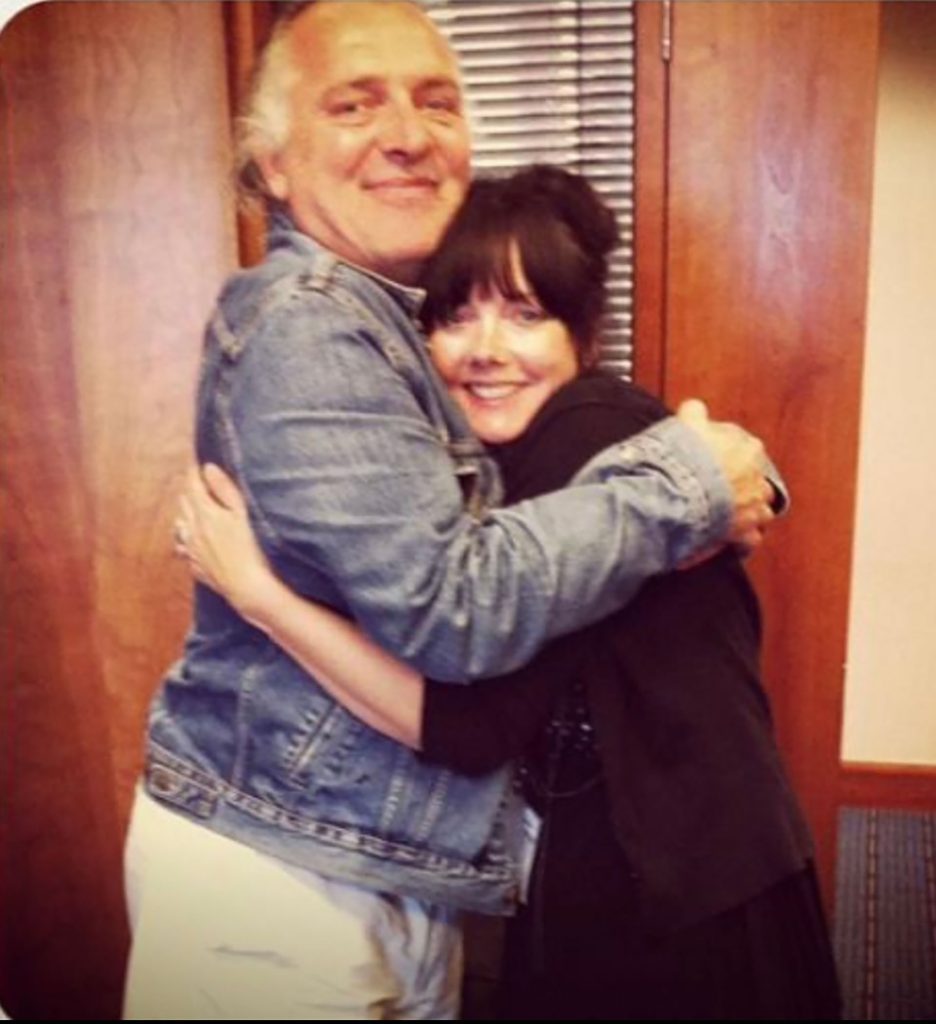
“It’s also nice to have worked locally too over the years. For Dal y Mellt, the first Welsh drama to be bought by Netflix, we filmed in Whitchurch. And the award-winning comedy-drama series In My Skin was filmed in Pen-y-Dre, Parc-y-Pentre, and Cefn Graig!
“Every day is different. I am blessed. I get to play dress up every day with some amazing people. We’re all there as a team with our uniqueness, talents, and ability to create something magical.”

